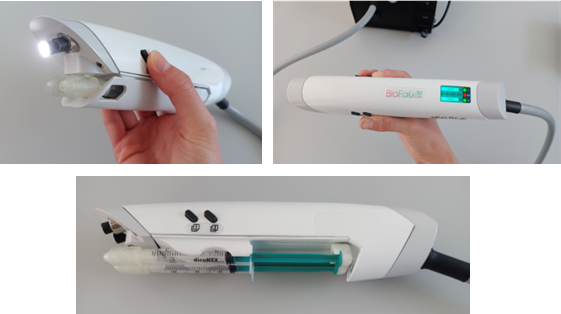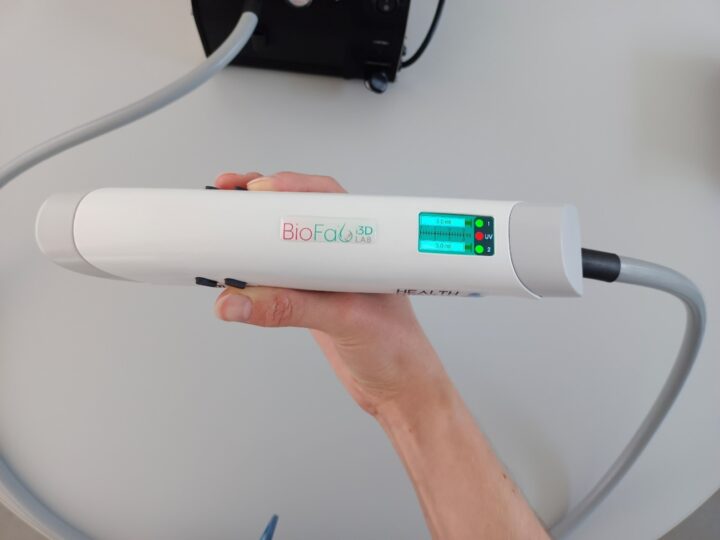Chronic wounds affect millions and burden healthcare systems, with venous and diabetic foot ulcers being especially common. Current treatments are costly and prolonged, while existing bioprinting systems face limitations like low cell retention and hospital-only use. To address this, researchers at the University of Granada (UGR) have developed a portable, multifunctional bioprinting device that enables precise, outpatient-friendly application of bioinks, improving treatment outcomes.
The technology is a portable bioprinting device that works like an airbrush or multi-biopen, enabling the precise application of fibrinogen-based bioinks with living cells onto the skin. It offers both spray and extrusion modes to adapt to different clinical needs. A dual-syringe system allows simultaneous delivery of bioink and a gelling agent, improving stability and adherence. An integrated UV light enables in situ photocuring for structure formation and enhanced retention. Compared to existing solutions, it achieves higher cell density and better fixation, reducing runoff and cell loss.

With two functional prototypes already in use, the technology has successfully been employed to print skin and cornea, and the team is now working on its application for cartilage.
Also, two patent applications have been filed to protect the invention, and the research group is in the process of performing a PCT application.
- EP24382364 – Protecting the bioink formulation
- EP24382365 – Protecting the bioprinting device
Benefits:
- Dual-mode application (spraying and extrusion) for adaptability to various clinical needs.
- Dual-syringe system for simultaneous delivery of bioink and gelling agent, enhancing stability and fixation.
- Integrated UV light enables in situ photocuring, improving structural integrity and retention.
- Ambulatory design allows use outside of operating rooms, offering flexibility and regulatory benefits.
- Uses a bioink with a richer composition than current market alternatives. Also, the bioink is fibrinogen-based, a commonly used sealant and the first to be approved by the FDA, which may help reduce regulatory barriers.
- Provides higher cellular density and better retention than conventional liquid-based cell solutions, reducing product runoff and loss.
The represented institution is looking for a collaboration that leads to commercial exploitation of the presented invention.
Institution: Universidad de Granada
TRL: 4-5
Protection Status: Patent application
Financing: DTS – Proyectos de Desarrollo Tecnológico en Salud – ISCIII
Contacto: Nuria Bas / nuria@viromii.com

